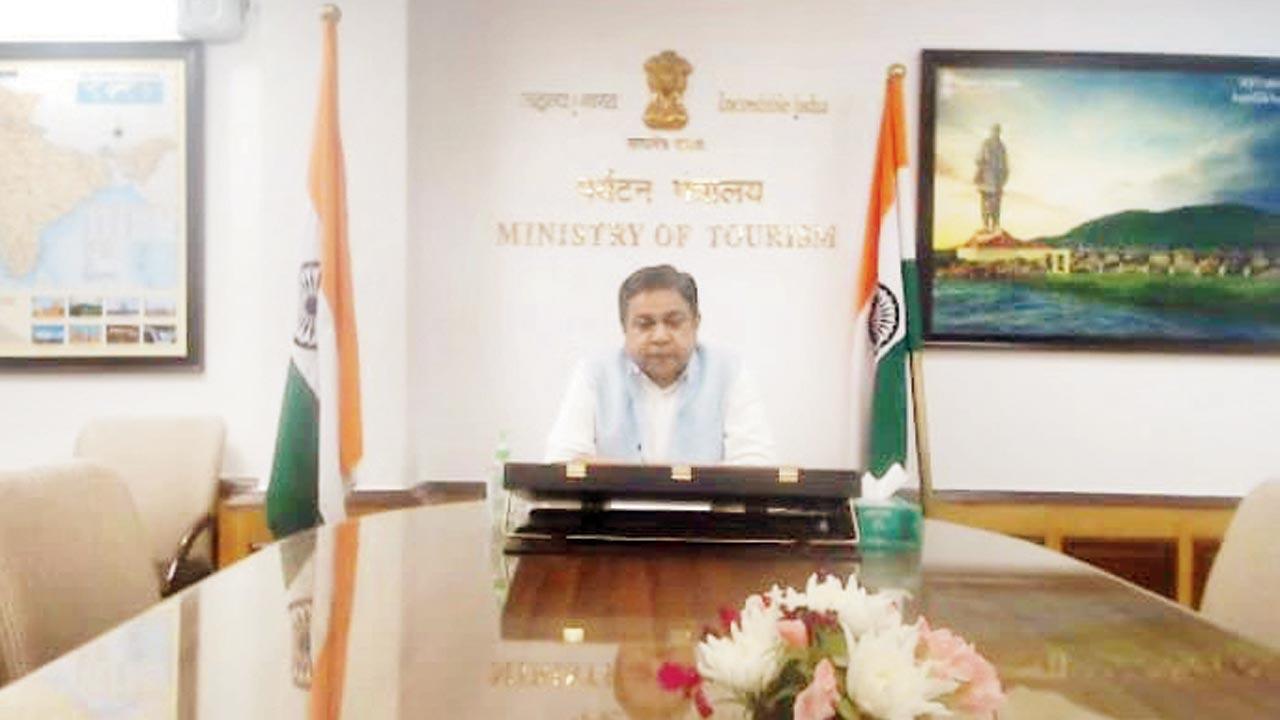The subject ‘India’s tourism strategy and growth post-COVID-19’ was the focus of a virtual seminar by Mumbai’s Indian Merchant Chamber (IMC) of Commerce and Industry

Arvind Singh addresses his online audience on tourism growth strategy
The smiles are back into miles as hospitality and tourism, hardest hit during the pandemic because of the nature of the industry, seeks to get back on track.
ADVERTISEMENT
The subject ‘India’s tourism strategy and growth post-COVID-19’ was the focus of a virtual seminar by Mumbai’s Indian Merchant Chamber (IMC) of Commerce and Industry. Juzar Khorakiwala, IMC president, gave the welcome address for the address on the subject by Arvind Singh (IAS), Secretary, Ministry of Tourism, Government of India. The chat was moderated skilfully by Farhat Jamal, chairman, IMC travel, tourism and hospitality committee.
Early signs
Khorakiwala cited how the tourism industry, a huge earner for the Indian economy when it comes to GDP and foreign exchange, has suffered for the past two pandemic years. “The industry is finally witnessing a change as rising vaccination rates are increasing people’s confidence. Now, because of a robust vaccination programme, there are early signs of growth,” he stated, setting the tone for an upbeat perspective for the sector. Jamal took a deep dive straightaway asking the Ministry of Tourism secretary about how he envisaged the revival of the industry.
Singh said, “There are early signs of revival in the industry. From October to December last year, hospitality providers and even homestays in remote parts of the country were reporting between 60 to 90 per cent occupancy. They were all hopeful of a booming season ahead. Then, unfortunately, the Omicron variant reared its head and there was a lull. Post that, we are seeing not only leisure travel but business travel too, picking up.”
Open skies
The big factor Singh explained was, “the opening of international flights on March 27. There are reports already of some international passengers coming in. The opening will bring down high international fares. For inbound tourist operators, there was a tax collected at the source and that has been done away with by the Finance Ministry. The domestic sector is doing well. Some expect inbound tourism to come to 50 per cent of pre-COVID levels by September-October this year.”
India abroad
To the moderator’s question about what the government is doing as far as packaging India overseas, Singh said, “The use of IT needs to be stronger in the tourism industry. The Prime Minister has conveyed to all diplomatic missions abroad that you have to focus on the three T’s that are trade, technology and tourism. Specific officers have been identified in these diplomatic missions to work on tourism. There is an emphasis on infra too. The road and airport network is expanding rapidly. A large number of airports are opening in the North-East. The number of flights going to J&K and Ladakh today was unheard of.”
MICE moves
Jamal asked about India’s potential as a Meetings, Incentives, Conferences and Exhibitions (MICE) destination with Singh stressing, “We have convention centres in not very well-known places like the North-East. A good one has come up in Varanasi with Japanese assistance. A new one is going to be inaugurated shortly in Bodh Gaya. A very important legal conference is going to be held in India shortly. The G-20 summit will be held in India in October 2023. We will be having a lot of events surrounding that.”
The secretary reminded his online audience, “During this year, we are celebrating our 75 years of independence. During one iconic week in July, the Tourism Ministry will be taking up events at prominent places associated with the Freedom Movement,” he said, painting a picture of an industry poised to realise the truth of the adage, ‘The night is darkest before the dawn. And I promise you, the dawn is coming.’
 Subscribe today by clicking the link and stay updated with the latest news!" Click here!
Subscribe today by clicking the link and stay updated with the latest news!" Click here!








